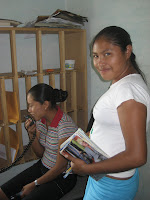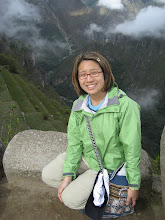
Diane McTurk must have been quite the vibrant beauty. Even now, the sparkle in her eyes betrays the intense passion that was responsible for the existence of Karanambu. As the Jane Goodall of giant otters (see picture), she refers to her “water dogs”, Benouni, named after the river, and Peche as “my heart, my love, my prides”. With a mischievous pet racoon nicknamed “The Bandit”, she is a most extraordinary lady. Nestled at the confluence of the Amazon and Essequibo Rivers, the eco-lodge also attracts an array of avid nature lovers: ornithologists, entomologists, caiman experts, and fish enthusiasts. These visitors are as interesting as the species that they study.
Donald, a professor from Syracuse, was on a 2-month expedition with his grad student studying the largest freshwater fish in the world, the Arapaima. At an adult length of 3m, the Arapaima is an obligate breather with ineffective gills; this particular feature makes population counting very easy because every 20 minutes, these fish must travel to the surface to breath. After showing us his slideshow and video presentation after dinner, Donald excitedly explained, “And so, we’re here to look for a species that might resemble the 1830s specimen at the Paris Museum of Natural History. The British Museum of course also had a different sample, but this was lost in storage – imagine! Such an important display lost forever!” He face was aghast before he continued, “And this paper published in the early 1900s that refuted the original paper that purported 4 different Arapaima species was based solely on the opinion of one biologist who felt that there was only 1 species – that’s it, no evidence, just an opinion! Well, clearly from the specimens that we’ve found here, there are even more than 4.” This man badly needs a T-shirt that says: Carolus Linnaeus is my Hero!
As a fellow Canadian from Waterloo, it was comforting to talk with Mike about Canuck matters, but it was really his Black Caiman project that got our attention. In order to monitor the population of caiman, much of the tagging occurs at night because the red eyes of these alligator cousins are easily visible with a flashlight glowing in the dark. We can attest to this since we travelled along the river well after the sunset and experienced the surprise of seeing 2 pairs of red eyes glowing by the shoreline. Indeed, a flashlight can also revel the green eyes of Anaconda hidden in the trees. In order to tag the caiman, the team would approach the caiman and with a metal lasso device, they would reign in the caiman beside the boat. After 20 minutes, the caiman would tire and the team would bring the caiman in the boat to be tagged before returning it to the water. The biologists would then be able to monitor movement of the population the following season. These real-life Crocodile Hunters take biology from the controlled lab environment and turn it into a thrill-seeking activity in the heart of the Amazon.

Aside from the fascinating species of human that we encountered, we were fortunate enough to see some truly beautiful animals, worthy of Natural Geographic documentaries. We saw the black-bearded saki monkey, the Amazon kingfisher, the blue heron, the pied plover, the red-shouldered macaw, vultures, and countless other birds, but the truly unusual animal was the Giant Anteater (see picture), which galloped at an astonishing pace across the Savannah. For us, this last adventure of our trip satisfied the childhood fascination that began in Grade 4 biology class when we learned about the ecosystems on different canopy layers and the highly adaptive wildlife that exists in this magical place.
Despite enjoying our time in Guyana, we are both glad to be coming home to the land of beaver, snow and café mochas. For all those in Toronto, we can’t wait to see you!








